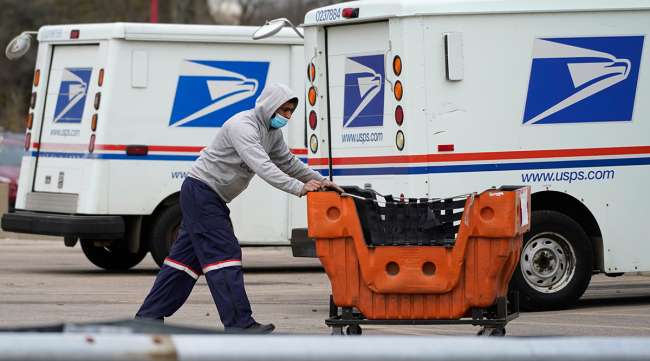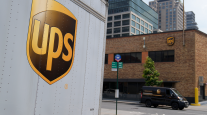Associated Press
Groups That Want to Electrify USPS Fleet File Suit

[Stay on top of transportation news: Get TTNews in your inbox.]
Sixteen states and four environmental groups that want the U.S. Postal Service to buy more electric delivery vehicles are suing to halt purchases of thousands of gas-powered trucks as the agency modernizes its mail delivery fleet.
The environmental groups' lawsuit, filed April 28 in federal court in California, asks a judge to order the Postal Service to conduct a more thorough environmental review before moving forward with the next-generation delivery vehicle program.
Plaintiffs contend that purchases of fossil fuel-powered delivery vehicles will cause environmental harm for decades to come.

ATA's Glen Kedzie and Transport Topics' Eric Miller dive into the realities and challenges of the proposed new NOx standard, what it means for truck manufacturers and for the industry's electric future. Tune in above or by going to RoadSigns.TTNews.com.
“Louis DeJoy’s gas-guzzling fleet guarantees decades of pollution with every postcard and package,” said Scott Hochberg, an attorney with the Center for Biological Diversity, referring to the postmaster general.
The lawsuit filed by Earthjustice, Center for Biological Diversity, CleanAirNow KC and Sierra Club could be the first of several targeting the Postal Service’s environmental review of the next-generation delivery vehicle program.
Separately, 16 states also sued USPS, claiming it violated federal law by choosing new gas-powered trucks over an electric fleet. The lawsit, filed in the U.S. District Court for the Northern District of California, asserts DeJoy violated the National Environmental Policy Act when deciding in February during what the suit calls a "deficient review process" to replace nearly 165,000 mail trucks primarily with vehicles powered by gasoline, not electricity, in its nationwide fleet of 212,000.
NEPA "requires government to look before it leaps by considering reasonable alternatives and allowing the people's voices to inform decisions," Washington Attorney General Bob Ferguson said in a news release. "Postmaster DeJoy illegally leapt towards gas-powered vehicles without sufficiently considering alternatives. Postmaster DeJoy failed to uphold his responsibility to protect our shared environment."
Plaintiffs in that lawsuit include 16 states, two cities (the District of Columbia and New York City) and California's Bay Area Air Quality Management District.
The Postal Service defended its actions.
“The Postal Service conducted a robust and thorough review and fully complied with all of our obligations under (the National Environmental Policy Act),” spokesperson Kim Frum said in an email.
The Postal Service contract calls for 10% of the new vehicles to be electric, but the Postal Service contends more electric vehicles can be purchased based on financial outlook and strategic considerations.
The percentage of battery-electric vehicles was doubled — to 20% — in the initial $2.98 billion order for 50,000 vehicles.
Want more news? Listen to today's daily briefing above or go here for more info
Environmental advocates contend the Postal Service’s environmental review was inadequate and flawed, and that the contract represented a missed opportunity to electrify the fleet and reduce emissions.
The review process “was so rickety and riddled with error that it failed to meet the basic standards of the National Environmental Policy Act,” said Adrian Martinez, senior attorney on Earthjustice’s Right to Zero campaign.
The Postal Service is in the process of replacing the ubiquitous delivery trucks that went into service between 1987 and 1994.
All told, the Postal Service’s fleet includes 190,000 local delivery vehicles. More than 141,000 of those are the old models that lack safety features like air bags, anti-lock brakes and backup cameras.
The new vehicles are taller to make it easier for postal carriers to grab packages and parcels that make up a greater share of volume. They also have improved ergonomics and climate control.
Contributing: Nicholas Turner of the Seattle Times
Distributed by Tribune Content Agency, LLC




